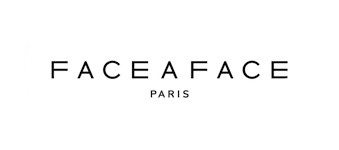Myopia management can slow the progression of myopia over time, reducing the risk of developing more serious conditions in the future.
Orthokeratology (also called ortho-k) has become a popular way to help correct vision by reshaping your cornea overnight. However, ortho-k requires several tests and a custom manufacturing process, resulting in a higher price tag. Additionally, ortho-k often needs follow-ups and adjustments, and the maintenance costs can quickly add up.
MiSight 1 day, multifocal contact lenses, and multifocal eyeglasses offer affordable alternatives to help correct vision and slow down myopia progression.
Why Is Myopia Control Important?
Myopia (nearsightedness) is a common refractive error that occurs when the eye grows longer than it should or the cornea is too steep. This prevents light from focusing correctly on the retina. It typically develops in childhood and progresses over the years.
The rate of myopia is on the rise worldwide and is progressing faster than ever.
When myopia is left to progress, it can lead to more serious eye problems later in life, such as retinal detachment, early cataracts, and glaucoma.
Myopia control helps manage myopia progression, reducing your risk of sight-threatening issues later in life.
Factors Behind Ortho-K’s High Cost
Ortho-k is a known method for correcting myopia and potentially slowing its progression. However, this treatment method comes with a high price.
Ortho-k contact lenses require a special manufacturing process before you can use them, and they may not suit everyone. Like other contact lenses, you need an accurate measurement of the surface of your cornea. This customization process contributes to a higher overall cost.
Because of this special process, several factors can affect the cost of ortho-k treatment, including:
- The complexity of your prescription
- The need for replacement lenses
Due to the way ortho-k reshapes your cornea overnight, you may also experience a decline in vision throughout the day. It is often a costly treatment for temporary results.

Alternative Myopia Management Methods
Other myopia control treatments can help correct vision and slow myopia progression with regular use.
MiSight 1 day Contact Lenses
MiSight 1 day lenses are specialized contacts designed for children to help correct vision while managing myopia.
MiSight uses concentric treatment zones in the lens to focus light to reduce the signals that stimulate eye elongation, which can ultimately slow myopia progression by up to 50%.
They are daily disposable lenses, so managing contact lens hygiene is easier.
Multifocal Contact Lenses
Like MiSight 1 day contact lenses, multifocal contact lenses contain multiple prescriptions in concentric rings that help wearers see near and distant objects.
Multifocal Eyeglasses
If you have concerns about your child wearing contact lenses, multifocal eyeglasses can help reduce myopia progression.
Like multifocal contact lenses, these glasses incorporate different lens powers to correct vision at varying distances. This can reduce strain during near work while regulating the visual signals that contribute to the eye’s elongation.
Multifocal eyeglasses are a suitable option—especially for younger children who aren’t comfortable wearing contact lenses.
These glasses can also be paired with other interventions. Your optometrist can help personalize a treatment plan to help manage myopia.
Other Methods to Help Manage Myopia
Spending More Time Outdoors
Beyond corrective lenses, a healthy lifestyle can play an important role in controlling myopia.
Excessive near-work and screen use have been linked to an increased risk of developing myopia.
Research has shown that spending more time outdoors, especially in daylight, can help prevent or slow the development of myopia. By spending more time looking at things far away, children engage with a wider range of vision.
Additionally, spending time outdoors is a great way to encourage physical activity and reduce sedentary periods.
Taking Frequent Breaks from Screen Use
The Canadian Association of Optometrists (CAO) provides a guideline for screen time recommendations for children:
- Children less than 2 years old are recommended to avoid any amount of screen time, except for the occasional video call.
- Children 2 to 5 years old should limit screen time to less than 1 hour per day. This is a great time to focus on engaging in reading, storytelling, or activities to support development.
- Children age 5 and above may use screens more regularly, but developing good screen habits is key. They should still balance screen time with creative outdoor time.
Follow the 20-20-20 Rule
For anyone using screens, the CAO recommends following the 20-20-20 rule: every 20 minutes, stare at something 20 feet away for 20 seconds. This helps your eyes relax.
Preserving Your Child’s Vision
With myopia on the rise, it’s becoming increasingly important to invest in your child’s vision and the future of their eye health.
Contact our team at Broadway Eyecare today to learn how we can protect your child’s vision. With a personalized care plan and tailored advice, we can support your child’s long-term ocular health.









